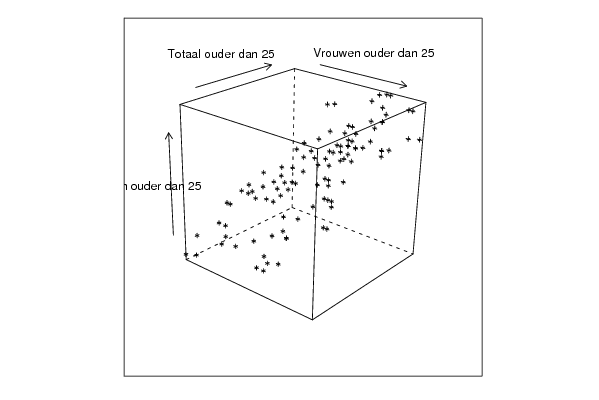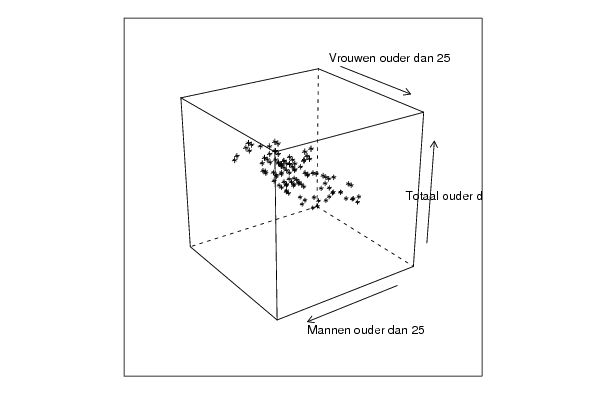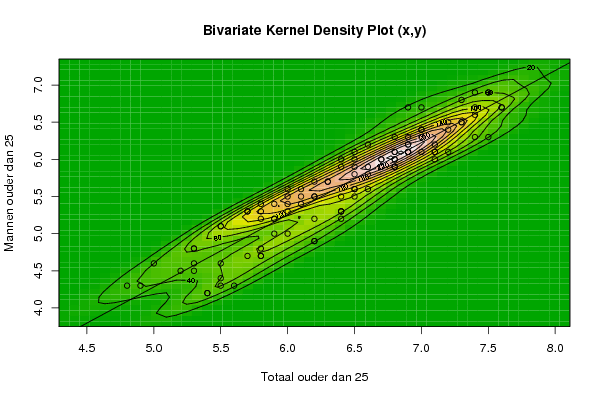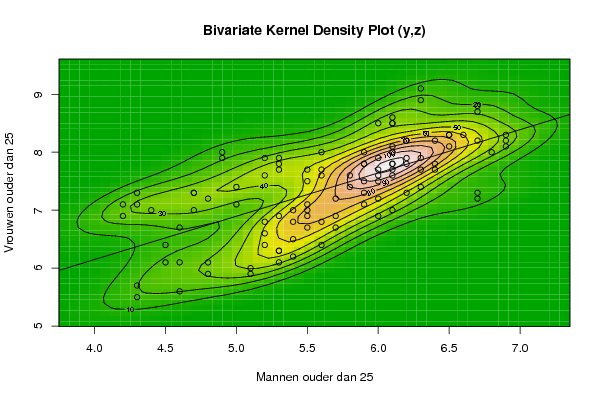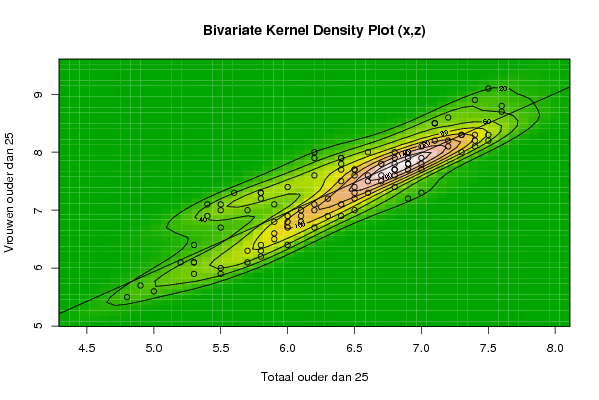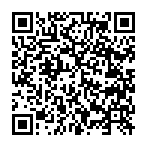Free Statistics
of Irreproducible Research!
Description of Statistical Computation | |||||||||||||||||||||
|---|---|---|---|---|---|---|---|---|---|---|---|---|---|---|---|---|---|---|---|---|---|
| Author's title | |||||||||||||||||||||
| Author | *The author of this computation has been verified* | ||||||||||||||||||||
| R Software Module | rwasp_cloud.wasp | ||||||||||||||||||||
| Title produced by software | Trivariate Scatterplots | ||||||||||||||||||||
| Date of computation | Wed, 12 Nov 2008 04:00:52 -0700 | ||||||||||||||||||||
| Cite this page as follows | Statistical Computations at FreeStatistics.org, Office for Research Development and Education, URL https://freestatistics.org/blog/index.php?v=date/2008/Nov/12/t12264877091nwpdn6sdo9jwl6.htm/, Retrieved Sun, 19 May 2024 08:42:16 +0000 | ||||||||||||||||||||
| Statistical Computations at FreeStatistics.org, Office for Research Development and Education, URL https://freestatistics.org/blog/index.php?pk=24118, Retrieved Sun, 19 May 2024 08:42:16 +0000 | |||||||||||||||||||||
| QR Codes: | |||||||||||||||||||||
|
| |||||||||||||||||||||
| Original text written by user: | |||||||||||||||||||||
| IsPrivate? | No (this computation is public) | ||||||||||||||||||||
| User-defined keywords | |||||||||||||||||||||
| Estimated Impact | 157 | ||||||||||||||||||||
Tree of Dependent Computations | |||||||||||||||||||||
| Family? (F = Feedback message, R = changed R code, M = changed R Module, P = changed Parameters, D = changed Data) | |||||||||||||||||||||
| F [Trivariate Scatterplots] [Trivariate scatte...] [2008-11-12 11:00:52] [a16dfd7e948381d8b6391003c5d09447] [Current] | |||||||||||||||||||||
| Feedback Forum | |||||||||||||||||||||
Post a new message | |||||||||||||||||||||
Dataset | |||||||||||||||||||||
| Dataseries X: | |||||||||||||||||||||
6,6 6,4 6 5,8 5,5 5,4 5,4 5,6 5,5 5,8 5,8 5,7 5,5 5,3 5,2 5,3 5,3 5 4,8 4,9 5,3 6 6,2 6,4 6,4 6,4 6,2 6,1 6 5,9 6,2 6,2 6,4 6,8 6,9 7 7 6,9 6,7 6,6 6,5 6,4 6,5 6,5 6,6 6,7 6,8 7,2 7,6 7,6 7,3 6,4 6,1 6,3 7,1 7,5 7,4 7,1 6,8 6,9 7,2 7,4 7,3 6,9 6,9 6,8 7,1 7,2 7,1 7 6,9 7 7,4 7,5 7,5 7,4 7,3 7 6,7 6,5 6,5 6,5 6,6 6,8 6,9 6,9 6,8 6,8 6,5 6,1 6 5,9 5,8 5,9 5,9 6,2 6,3 6,2 6 5,8 5,5 5,5 5,7 5,8 5,7 | |||||||||||||||||||||
| Dataseries Y: | |||||||||||||||||||||
5,6 5,3 5 4,7 4,4 4,2 4,2 4,3 4,3 4,7 4,8 4,7 4,6 4,5 4,5 4,8 4,8 4,6 4,3 4,3 4,6 5,4 5,5 5,5 5,3 5,2 5,2 5,4 5,3 5 4,9 4,9 5,3 6,3 6,7 6,7 6,4 6,1 6 6,2 6,1 6 6 5,9 5,9 6 6,1 6,4 6,7 6,7 6,5 5,9 5,6 5,7 6 6,3 6,3 6,2 6,1 6,3 6,5 6,6 6,5 6,2 6,2 5,9 6,1 6,1 6,1 6,1 6,1 6,3 6,7 6,9 6,9 6,9 6,8 6,4 5,9 5,5 5,6 5,6 5,8 5,9 6,1 6,1 6 6 5,8 5,5 5,5 5,4 5,2 5,2 5,2 5,5 5,7 5,7 5,6 5,4 5,1 5,1 5,3 5,3 5,3 | |||||||||||||||||||||
| Dataseries Z: | |||||||||||||||||||||
8 7,7 7,4 7,3 7 6,9 7,1 7,3 7,1 7,3 7,2 7 6,7 6,4 6,1 6,1 5,9 5,6 5,5 5,7 6,1 6,8 7,1 7,5 7,8 7,9 7,6 7 6,9 7,1 7,9 8 7,9 7,4 7,2 7,3 7,7 7,8 7,6 7,3 7 6,9 7,2 7,3 7,5 7,5 7,7 8,2 8,8 8,7 8,3 7,1 6,8 7,2 8,5 9,1 8,9 8,2 7,6 7,7 8,1 8,3 8,3 7,9 7,8 8 8,5 8,6 8,5 8,1 7,8 7,9 8,2 8,3 8,2 8,1 8 7,8 7,8 7,7 7,7 7,6 7,6 7,8 8 8 7,9 7,7 7,4 6,9 6,7 6,5 6,4 6,6 6,8 7 6,9 6,7 6,4 6,2 5,9 6 6,3 6,3 6,1 | |||||||||||||||||||||
Tables (Output of Computation) | |||||||||||||||||||||
| |||||||||||||||||||||
Figures (Output of Computation) | |||||||||||||||||||||
Input Parameters & R Code | |||||||||||||||||||||
| Parameters (Session): | |||||||||||||||||||||
| par1 = 50 ; par2 = 50 ; par3 = Y ; par4 = Y ; par5 = Totaal ouder dan 25 ; par6 = Mannen ouder dan 25 ; par7 = Vrouwen ouder dan 25 ; | |||||||||||||||||||||
| Parameters (R input): | |||||||||||||||||||||
| par1 = 50 ; par2 = 50 ; par3 = Y ; par4 = Y ; par5 = Totaal ouder dan 25 ; par6 = Mannen ouder dan 25 ; par7 = Vrouwen ouder dan 25 ; | |||||||||||||||||||||
| R code (references can be found in the software module): | |||||||||||||||||||||
x <- array(x,dim=c(length(x),1)) | |||||||||||||||||||||

